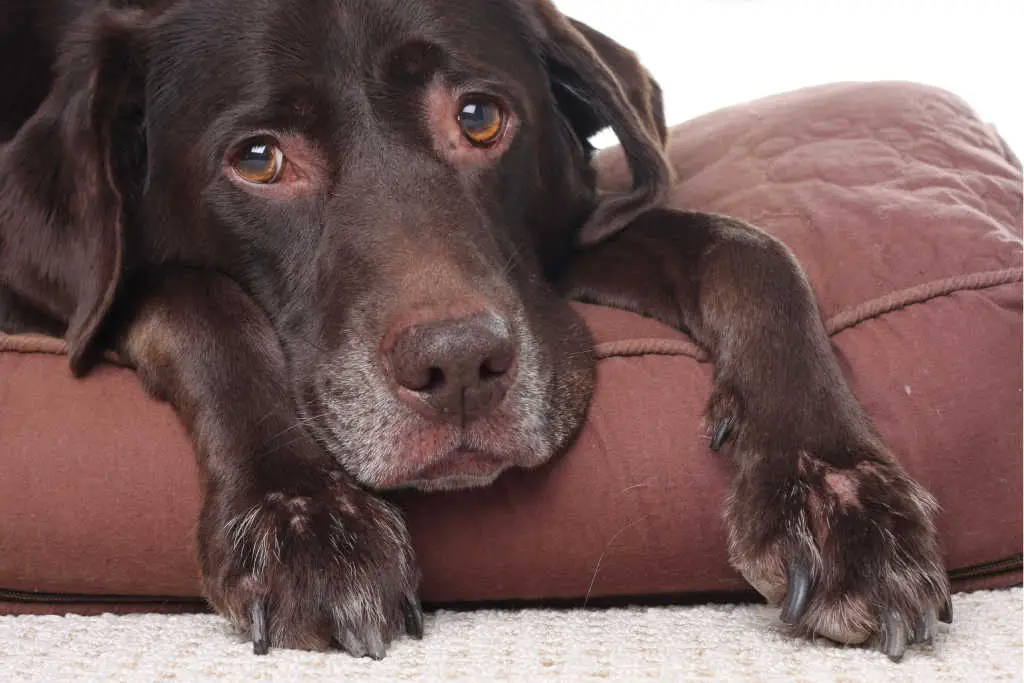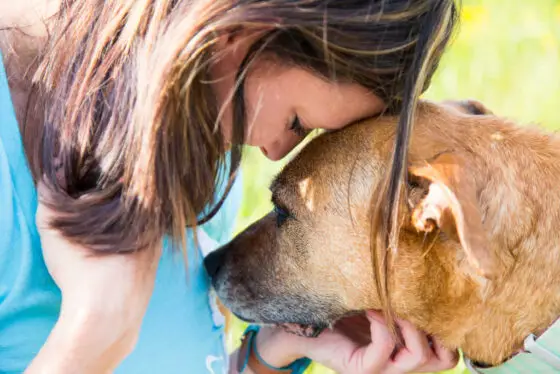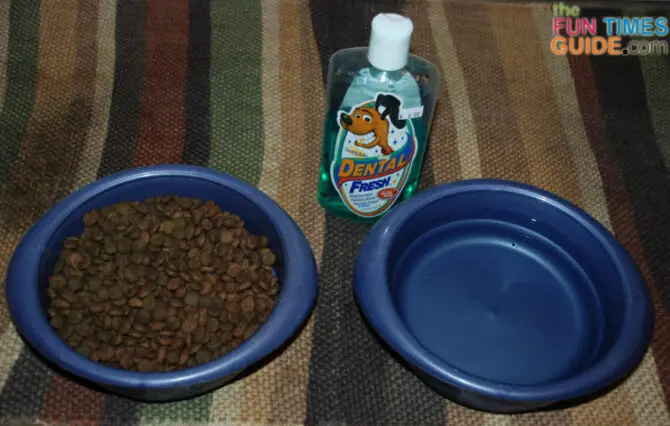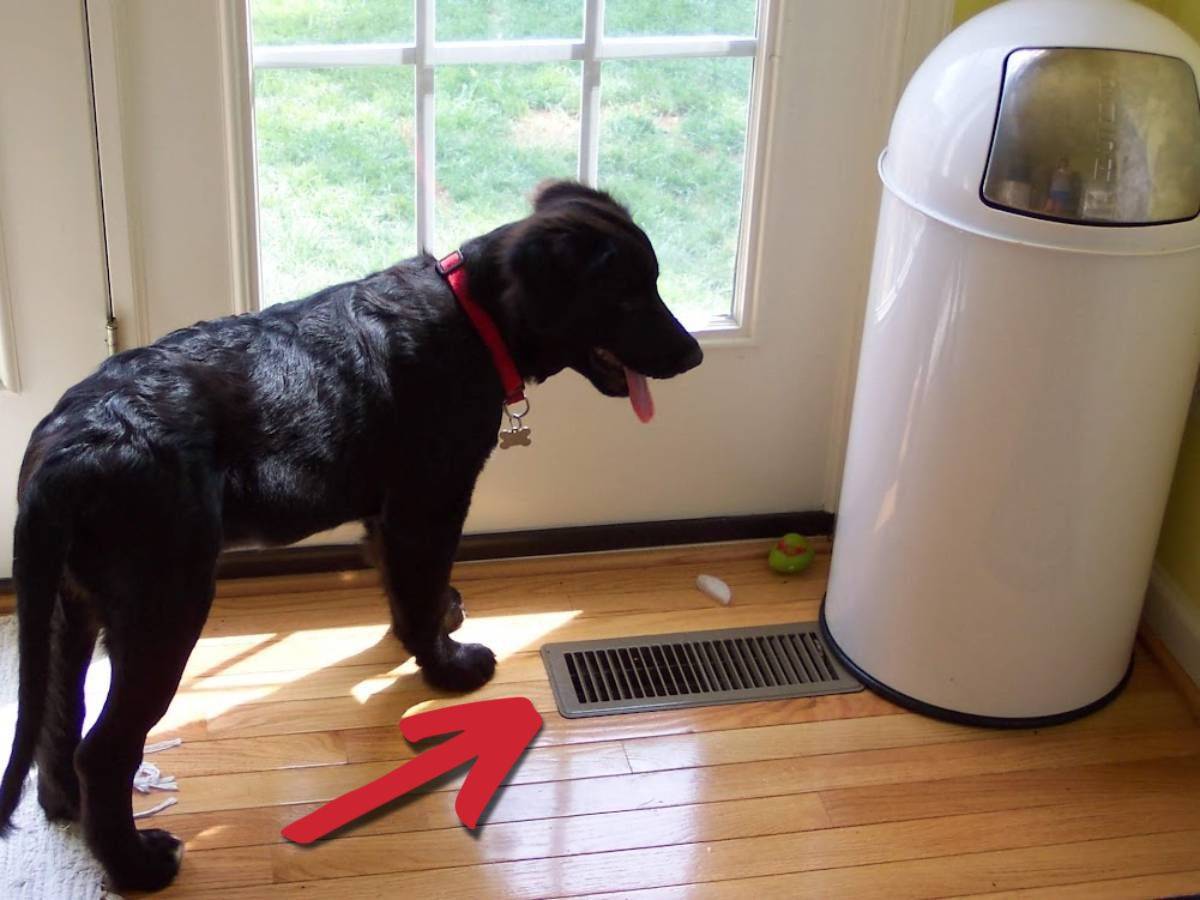Whether you’ve adopted a lovable older dog or your furry friend has just grown up and is now reaching their golden years… it’s time to start thinking about senior dog health problems that accompany the aging process.
Although you can’t really change the course of nature, you can work with your vet to come up with effective solutions to prolong and improve your old dog’s wellbeing.
To help your dog transition into their senior years, here are 8 common older dog health issues to be aware of — and the ways you can help...
When Is A Dog Considered A Senior?
A senior dog or geriatric dog is one that is more than 10 years old — generally speaking.
More specifically, it depends on your dog’s breed and size:
- Small dogs become seniors at 11 years old.
- Medium dogs become senior citizens at 10 years old.
- Large dogs become seniors at 8 years old.
- Giant breeds become senior dogs at 7 years old.
Those are the ages when you should switch from adult food to senior dog food and begin paying attention to your dog’s physical needs as they age.
The 8 Most Common Older Dog Health Issues
#1 – Joint Pain
The older a dog gets, they will begin to develop orthopedic issues related to the musculoskeletal system — such as joint inflammation and degeneration.
Arthritis (specifically osteoarthritis, or degenerative joint disease) is very often found in older dogs.
Although it becomes more of an issue at an older age, arthritis in dogs can actually arise in early puppyhood — if the dog has developmental issues like hip dysplasia, osteochondrosis, or growth plate disorders.
Certain dog breeds are more prone to having orthopedic issues like arthritis, including:
- Doberman Pinchers
- German Shepherds
- Golden Retrievers
- Great Danes
- Labrador Retrievers
- Rottweilers
As you can see, larger breeds are especially susceptible — although smaller dog breeds are not immune to the disease.
Signs of arthritis in dogs are:
- Joint stiffness
- Swelling of affected joints
- Limping
- Difficulty standing and sitting (or lying down)
Unfortunately, canine arthritis is a progressive disease — which means it gets worse over time. However, if addressed right away, canine arthritis can be slowed down and controlled with proper diet, regular exercise, and soothing joint aids.
Dogs with arthritis can also benefit from stem cell therapy — a medical procedure where stem cells are injected into the arthritic dog’s affected area (knees, hips, elbows, shoulders, etc.) to prevent wear & tear and promote healing.
#2 – Obesity
Although obesity can affect dogs of all ages, senior dogs are more susceptible to gaining weight due to:
- Decreased mobility
- Joint problems (mentioned above)
- Gastrointestinal issues
You should also be aware of the fact that older dogs with excess weight have a weaker immune system — which makes them more prone to illness. Plus, it’s harder for them to lose weight as they become less active and less motivated to move or exercise.
To make things even worse, canine obesity can put more pressure on the already weakened joints of an older dog. It can also negatively affect the heart… and any cancer treatments the dog may be going through.
Your dog’s weight will primarily depend on their lifestyle and their eating habits — so, as you can see, canine obesity is largely preventable.
But sometimes, senior dog obesity can be a result of health issues like hyperthyroidism — which is improper function of the thyroid gland.
In addition to significant weight gain, symptoms of hyperthyroidism also include:
- Skin conditions
- Hair loss
- Mental dullness
- Lack of energy
To prevent obesity in your dog’s senior years, it’s essential to keep your dog as active and engaged as possible. Focus on feeding them quality, healthy dog food. And always keep their overall health and wellbeing in mind.
These are the top 5 dog breeds most likely to become obese:
- Basset Hound
- Beagle
- Dachshund
- Labrador Retriever
- Pug
#3 – Impaired Vision
As they get older, dogs are prone to developing degenerative eye diseases.
Cataracts are the most common senior dog eye issue.
Signs of cataracts are a milky, cloud-like layer on the dog’s eyeballs — which can cause partial or complete blindness.
Depending on the disease’s progression, your vet might be able to surgically remove the cataract.
Nevertheless, dogs are quite capable of relying on other senses — especially their hearing and smell.
There’s not much that can be done to prevent canine cataracts.
But once your dog develops vision problems, you can help by:
- “Steering” your dog on a leash whenever they’re in unfamiliar places
- Keeping the same furniture arrangement inside your house
- Keeping your dog’s bowls and bed always in the same place
Dog breeds that are most likely to have problems with cataracts are:
- Bichon Frise
- Boston Terrier
- Cocker Spaniel
- Poodle
#4 – Hearing Loss
Another unfortunate side effect of canine aging is the degeneration of hearing.
Dog breeds with higher incidents of deafness include:
- Australian Cattle Dogs
- Bull Terriers
- Dalmatians
- English Setters
- Jack Russell Terriers
- Whippets
Must read: Deaf Dogs Are NOT In Pain Or Unhappy
Common symptoms of impaired hearing in dogs are:
- No reaction to everyday sounds
- Lack of response to loud noises, like a sudden bang or clapping
- No response when calling your dog’s name
Unfortunately, canine deafness is not treatable. But there are some ways you can help your senior dog easily adapt to their hearing loss.
The secret is to find ways to attract your dog’s attention — other than vocally. Two great ideas are:
- Use hand signals (similar to sign language) whenever your dog is looking at you
- Stomp your foot to create vibrations on the floor that your dog will notice
There are lots of deaf dog training techniques to help dog owners communicate effectively with their deaf pets.
#5 – Dementia
Just like older humans, older dogs can suffer from dementia and a loss of cognitive functions.
This includes your dog’s:
- Mental perception
- Awareness
- Learning
- Memory
Cognitive dysfunction syndrome (CDS) is a neurobehavioral disorder affecting geriatric dogs that is characterized by an age-related decline in cognitive abilities sufficient to affect functioning — with behavior changes that are not attributable to other medical conditions. The prevalence of CDS in dogs is extremely high. —Today’s Veterinary Practice
Signs of cognitive dysfunction include:
- Barking or whining for no particular reason
- Looking confused
- Difficulty finding their way in familiar surroundings
- Lack of energy
- Bathroom accidents
- Anxiety
- Longer sleeping sessions
There’s no cure for dementia or senility in dogs — but it can be controlled with medication, environmental adaptations, or behavioral modification training.
#6 – Dental Problems
If you notice your dog having difficulty eating, chewing, or picking things up… they may have an issue with their teeth.
The most common mouth problem in senior dogs is periodontal disease (aka gum disease, or gingivitis). This condition develops from a build-up of plaque and tartar. It causes the gums to pull away from the teeth.
Gum infections in dogs can be dangerous — because dental infections are often connected to heart disease.
Signs of dog dental problems include:
- Bad breath
- Plaque — a soft yellow build-up on the teeth
- Tartar — a hard yellow or brown build-up on the teeth
- Swollen or bleeding gums
As a part of their regular medical care, your dog should have a dental cleaning every few years — to prevent these types of dental issues from arising in the first place.
You should also brush your dog’s teeth using a dog-safe toothpaste (not human toothpaste).
Finally, there are healthy dental chews and dog supplements specifically made to maintain good hygiene of the canine mouth, gums, and teeth.
The Veterinary Oral Health Council (VOHC) is an organization that evaluates pet products to see if they meet standards for reducing plaque or tartar. Approved foods, treats, and chews must reduce plaque or tartar by at least 10% to achieve the VOHC seal of approval. If a chemical anti-plaque agent is used, it needs to reduce plaque or tartar by at least 20%. —Pets by WebMD
Dog breeds that are more likely to have problems with their teeth and gums are:
- Boxers
- Cavalier King Charles Spaniels
- Chihuahuas
- Chinese Cresteds
- Collies
- Dachshunds
- Greyhounds
- Malteses
- Poodles
- Pugs
- Shelties
- Shih Tzus
- Yorkshire Terriers
#7 – Heart Disease
Older dogs are prone to developing heart disease (cardiovascular disease) and eventually congestive heart failure (inability of the heart to efficiently pump the blood) This, in turn, causes accumulation of fluid in the lungs.
Symptoms of canine heart disease include:
- Difficulty breathing
- Weakness
- Heavy panting
- Abdominal swelling
- Loss of appetite
- Bluish color to the skin and membranes
- Lethargy
- Difficulty moving
To prevent heart disease, make sure that your dog gets regular vet checkups, follow these 6 tips from canine cardiologists, and respond immediately to any suspicious symptoms.
Dog breeds that are more likely to develop heart disease tend to be larger breeds like:
- Doberman Pinchers
- Great Danes
- Rottweilers
#8 – Cancer
Probably the most detrimental disease that strikes senior dogs is cancer — which is also the leading cause of dog deaths.
Often, canine cancer is first noticed with the onset of gastrointestinal symptoms, including:
- Diarrhea
- Vomiting
- Drooling
- Weight gain or loss
More noticeable symptoms include lumps and bumps on your dog’s body.
Although not every tumor or skin condition means cancer, it’s important to routinely check your dog for lumps, bumps, and skin changes. Grooming your dog at home (at least once a week) makes it easy to notice changes in your dog’s skin and hair. It also gets your dog used to being “checked” — by you or a professional.
The only way to diagnose canine cancer is to take your dog to a veterinarian.
After being diagnosed, your first course of action is to find a board-certified veterinary oncology specialist.
Sometimes, cancerous tumors can be removed. But if the cancer cells have already spread to other parts of the body, that will affect the type of treatment your dog receives. Chemotherapy is another alternative. Only a veterinary oncology specialist will know the best way to treat your dog — based on their age, breed, and overall health.
Generally speaking, the average survival time for canine cancer is 2 to 12 months from the date of diagnosis.
The dog breeds more prone to cancer are:
- Beagles
- Bernese Mountain Dogs
- Boxers
- Cocker Spaniels
- Doberman Pinschers
- German Shepherds
- Golden Retrievers
- Great Danes
- Poodles
- Rottweilers
The Bottom Line

We must come to terms with the fact that our furry companions will someday be coping with one or more health issues.
The best thing we can do for them is to take all the necessary precautions, regularly consult with a vet, and make sure they have a happy and fulfilled life. Be sure to:
- Watch for signs of joint issues and arthritis — to eliminate your dog’s pain.
- Don’t overfeed your dog — to keep their weight under control.
- Make sure that your dog gets enough exercise — to keep them active.
- Challenge your dog mentally every day — to keep their brain sharp.
- Have your dog’s teeth cleaned — to prevent gum disease.
- Routinely check your dog’s skin, hair, eyes, ears, teeth, abdomen, and paws — to know what’s “normal” for your dog.
- Keep an eye on your dog’s breathing, coughing, and overall behavior — to catch heart issues the moment they arise.
The first time you notice anything unusual, have your dog seen by a vet — because senior dog health issues can quickly affect your dog’s quality of life.
If you don’t have a vet yet, want a second opinion, or can’t physically take your dog to the vet right now, there are vets available online who can give you their professional opinion on your older dog’s health issues.
Must read: How To Know When It's Time To Euthanize Your DogLike this post? Save it to read again later… or share with others on Pinterest!

Lauretta Williams is a co-founder at PawMaw.com, a website dedicated to reuniting people with their lost pets. In her free time, she enjoys sharing helpful tips for caring for dogs.





